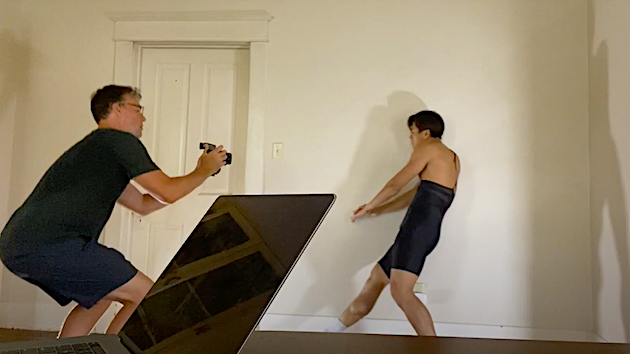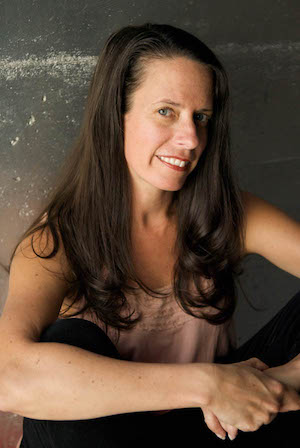
Six months after the coronavirus pandemic shuttered performing-arts venues in mid-March, there are more unsettling questions than there are comforting answers about the future of dance — and classical and contemporary ballet in particular.
Adding tilt to the unsteady imbalance are the art form’s longstanding gender inequities and worldwide social-justice protests related to racism after the most recent killing of Black Americans at the hands of law enforcement. The open wounds of gender and racial inequities that lay across American history and current affairs have left deep imprints on the entire dance world.
In this environment float the presumptions and principles that have led to ballet companies directed generally by men; with more white dancers than people of color in ballet company ranks; with more funding for white-led dance company boards and management, and more commissions and grants awarded to white applicants or for projects with Western, Eurocentric origins and focus. White is not just found in the classical tutus found of Swan Lake or Giselle, but across the entire ballet landscape.
During the unwelcome furlough of COVID-19, companies large and small cancelled annual Nutcrackers, the ballet world’s major money-making machine, and often enough, the bedrock funding for entire seasons. This raises existential questions, but also opportunities to reflect on how companies can more broadly represent their communities. What are dance artists and organizations willing to change, and will it be enough to sustain the art form?
Searching for artists who might be pushing the parameters with results lasting beyond quick, flashy trends, I talked to Trey McIntyre, Amy Seiwert, and Gregory Dawson, three choreographers/artistic directors whose work has risen to prominence and receives considerable local, national and international attention. I asked them what they are doing to keep their companies afloat and invited them to speak about their perspectives on dance, ballet, digital dance offerings, and the state of the art.
Trey McIntyre

Trey McIntyre folded his successful, Boise-based, traditional model contemporary ballet company, Trey McIntyre Project (TMP), in 2014. Transitioning to freelance choreographer with commissions continuing to come and his ballets in the repertories of San Francisco Ballet, Smuin Ballet, Hubbard Street Dance Chicago, Houston Ballet, New York City Ballet, American Ballet Theatre, Washington Ballet, Stuttgart Ballet, and many more, McIntyre simultaneously launched a career as a photographer. While McIntyre was at Houston Ballet choreographing Pretty Things, a commission set on music by David Bowie, the pandemic shut down the action. Infection rates were peaking in New York, where he currently maintains home base, so McIntyre decided to stay put. Eager to keep the dancers — and himself — occupied, he made three short dance films and offered them free online for the month of August.
“They were proof of concept,” he says in a phone interview from London. “I fundraised so everyone would get paid. The films I made in Houston came from a stilted birthing feeling (from the Bowie ballet being halted days before the premiere), so this is the genesis of the project, with amazing artists.”
The experiment has quickly evolved to become TMP’s latest initiative, FLTPK (flatpack), featuring new digital dance films with original music and offered through Patreon‘s online subscription service. Patreon was co-founded by Jack Conte of the band Pomplamoose and his college roommate Sam Yam as a way for artists to crowdfund their work. The basic platform support results in FLTPK’s current offerings: two world-premiere films streaming every-other Friday night each month.
Subscribers pledge any dollar amount to support each work produced. (For example, pledge $9 twice a month, that’s the admission price for each film. Pledge $1, each ticket is $1.) If FLTPK doesn’t deliver a film, subscribers owe nothing. Unlike one-off Kickstarter or GoFundMe campaigns, ongoing financial support generates new works and every artist receives equal shares of a revenue stream meant to outlast the pandemic.
McIntyre believes audiences interacting with flat screens in their homes are primed for bold digital content. To create compelling dance films, artists must consider it a new medium. “It’s in its infancy,” he says. “A square pane in your lap is not like a theater.” Even seasoned dance makers must learn and master the tools and skills of the film trade, develop strong storytelling muscles, and understand if their viewer is someone randomly surfing YouTube or a dedicated arts fan.
First and foremost, McIntyre says they must remember that amid the “glut of online information and content,” shorter is generally better. Even so, a longer, 90-minute film with arresting truth and individuality, will gain traction according to McIntyre, especially if it offers “buy-in” similar to FLTPK’s and interaction beyond passive viewing. He mentions films made on iPhones by dance filmmakers in Los Angeles who are “really killing it” and Mike Tyus, a dancer and founding member of Jacob Jonas The Company. “He shot a duet with his girlfriend on the beach. It’s gorgeous cinematography and a substantial duet with emotional content.” (It is one of FLTPK’s films this year.)
About subscriptions and membership platforms as new models for revenue, he says the crowdfunding structure aims to be self-sustaining, egalitarian, transparent, and reflective of the actual cost of making new work. As one of the project’s copresenters during the earliest phase, he says, “It’s not about presenting my aesthetic. I want to present as many viewpoints as possible. Having actors be in charge, not even dancers, let’s have that as well. Patreon is a different relationship than the patron model. It’s pulling back the veil so people understand the pay, the resources, the dollars needed to make something happen. There’s been a kind of charity thinking in the arts: We say, ‘it’s bad it costs this much, can you help pay for it?’ Instead, [this model is] seeing your dollar in action.”
Inspired less by dance films than by photography and by artists including film director Matthew Barney, filmmaker David Lynch, and American painter/printmaker Edward Hopper, McIntyre suggests the pandemic-forced shift of dance from performance venues to online presentation has both positive and negative impacts. Separating artists and audiences from live performances is “not a good thing,” but film’s access to broader audiences and the opportunity to develop “a new eye” hold possible benefits. “Film gives you the ability to control where the eye goes. A quickness of going through space. But the live performance, the energy transfer of being in the space with the performer, it cannot be replicated.”
Asked about racial and gender equity in the dance world, especially classical ballet, McIntyre says, “It can’t be business as usual. All of our beliefs about consistency and permanence are constructs of comfort. Everything ends. Our life is led by the cycle of birth and death. It’s built into all things. These intense systems we build up out of a need for security, in the end, we can’t fight the nature of things. Now, you change or die. My hope is that dance companies look incredibly different. Start from scratch. Reenvision how we might support a dance culture that is a new world.”
Gregory Dawson
 Gregory Dawson
Gregory Dawson
“The semester just started at Dominican [University] and I am a heavily involved in trying to facilitate the building of outdoor studios,” Dawson writes in an email. His concerns include the challenges to the dance world that have surfaced from the women’s movement and calls for gender equity, the pandemic, and the social justice outcry. He explains:
#MeToo, Covid, and BLM movements have brought out blaring weaknesses in the dance community in general. Dancers that are not of color are accessing how they’ve contributed to systematic racism. Arts universities are cultivating a learning culture that requires artists to asks questions for better understanding. Covid has caused us all to go inside and search for ways to cope, and reflect on our own individual artistic voices, but also has challenged us to exist in these times. For myself, the challenge has been how to convey my ideas to artists through internet interaction, and also allowing the medium to be what it is, and not to be defeated by the obstacle.”
Looking at dance on film, Dawson finds “good films exist on most every continent.” Although he is most intrigued by light and how it supports movement in the medium, films that stimulate the imagination through unique motion and sophisticated sound engineering grab his attention. Unlike McIntyre’s deep plunge into filmmaking, Dawson states that online presentations of dance compared to live performances are primarily “an alternative that gives the audience the next-best option during this Covid period.”
Which doesn’t mean he has absolutely no faith or investment in exploring the format. While live performance offers a captivating, communal experience that can’t be replicated cinematically, Dawson says digital dance forces artists to think unconventionally. Without having to physically occupy the same space, virtual dance opens up new connections and opportunities.
Asked whether or not dance companies will remain economically viable, Dawson says, “Large [dance] companies will always exist. Most have foundations, endowments, and audiences that are faithful patrons. My hope is that that audience uses this period to explore all the other possibilities, since we are all confined to our computers for dance. My hope is that they are reaching outside of their bubble, because if they do, they will see innovative new artists [who] will need their support when this is all over. Those smaller companies do not have foundations and are supported by dance loving audiences like themselves. Without support, they cannot exist. I do think that smaller organizations, before the pandemic and after, are constantly reinventing and transforming themselves to remain relevant.”
Amy Seiwert

Former Smuin dancer and choreographer Amy Seiwert knows the blows of COVID-19 firsthand. Appointed artistic director of Sacramento Ballet in July 2018, Seiwert became one the country’s few women leading a well-established, mid-size ballet company. She was side-slammed by the economic wrecking ball of the pandemic when her contract was terminated in July.
Fortunately, Seiwert in 2004 founded her own contemporary ballet company, known then as im’ij-re and, after incorporating in 2011, under the current name, Amy Seiwert’s Imagery. Since gaining nonprofit status in 2013, Imagery has grown beyond a modest entity spotlighting Seiwert’s choreography to include collaborative projects that support artists working in disciplines other than dance. Programs such as the SKETCH Series and Move to the Now emphasize risk-taking, new voices, participatory diversity, and increased equity.
When Sacramento Ballet shuttered its doors, Seiwert jumped back into Imagery full force, demonstrating the qualities that have earned her attention as a dancer, choreographer — including a position on Dance Magazine’s “25-to Watch” A-list — and the leadership position recently sacrificed in Sacramento. Seiwert is resilient, with a relentless work ethic and a joie de vivre matched by street smarts and high intellect.
“Imagery had always thought of dance film as a type of touring,” she says. “Our films have been shown across oceans, something we as a company have yet to do. Film is a part of the evolution of our field, but the same way people still go to hear live music when they can get a digital download, people will go again to see live dance. Dance on film isn’t meant to replace the live experience, it’s its own genre.”
As dance continues to evolve, Seiwert believes smaller, more nimble companies and artists will lead change. “There can be more agility and ability to shift when you are small, which can be a strength right now. Of course, our resources are less than the large-budget organizations, and that instability causes stress. [They] have the resources, but they also might have a board or leadership who fear change and resist evolution. The potential for how they use their considerable resources right now, to imagine what ballet can be, in this moment, is exciting.”
Seiwert isn’t waiting around for big companies to innovate. This year’s 10th anniversary SKETCH Films: Red Thread combines dance and documentary film. Stories reflect the convergence of four crises in 2020: a health pandemic, an economic recession, a tipping point in social justice, and the devastating effects of climate change. Seiwert’s contribution this year is a dance film created with Academy Award-nominated documentary filmmakers Kristine Samuelson and John Haptas that is inspired by chef Patrick Mulvaney and his work with mental-health advocacy in the hospitality field. (SKETCH 2020 also gave commissions to Imagery Artistic Fellow Ben Needham-Wood, Chicago-based choreographer Stephanie Martinez, and NYC-based choreographer Jennifer Archibald. Original scores will be composed by Kishi Bashi and Emily Hope Price.)
 Although Imagery’s formal title bears her name, Seiwert emphasizes the company and her approach to curation have never been solely about her work. “To ensure equity, leadership needs to commit to it. Since SKETCH began a decade ago, we have presented 24 world premieres by 14 choreographers. Sixty-four percent of our commissions have been to women. Twenty-nine percent of our artists have been BIPOC. Twenty-five percent of our Board is BIPOC. Only two out of the 14 choreographers have been BIPOC. We have work to do. We know it, and we are committing to it organizationally.”
Although Imagery’s formal title bears her name, Seiwert emphasizes the company and her approach to curation have never been solely about her work. “To ensure equity, leadership needs to commit to it. Since SKETCH began a decade ago, we have presented 24 world premieres by 14 choreographers. Sixty-four percent of our commissions have been to women. Twenty-nine percent of our artists have been BIPOC. Twenty-five percent of our Board is BIPOC. Only two out of the 14 choreographers have been BIPOC. We have work to do. We know it, and we are committing to it organizationally.”
Which means she expects to participate in hard conversations and deep reflection about “how our field has benefited from white-supremacist culture.” She knows equity must be actively pursued to be achieved.
Dance on film provides one avenue that can be used to address the problems — now, not just when audiences return to opera houses and concert halls.
“While sitting in the second balcony is a great place to see patterns in a Balanchine work or feel the power of 24 swans, it’s not a great way to experience the nuance of a dancer’s expression,” she says. “Dance film changes all of that. We can direct the viewer’s line of vision in different ways and tell narratives differently. We have the option of close-ups or showing the dancers’ sweat and effort. There are also added film techniques that can be utilized, creating experiences that could not exist on the stage.”
But Seiwert expresses reservations about the economic viability of online platforms that attach “ticket fees” or pay-what-you-can donation requests for streamed films or live performances. To pay artists a living wage will involve solid funding. In a down economy, revenue for dance on a new delivery platform represents an obvious, monumental challenge.
All of which spins the lens back to FLTPK’s crowdfunded model. If classical ballet is to eliminate the color code, open up funding to women, people of color, and other underserved artists, pay artists equally and transparently, and serve audiences on a wider variety of platforms, resorting to old methods and practices will not be enough. It might depend on large foundations and presenters stepping up their support and understanding of new perspectives on what classical ballet can be. It might depend on the people who care and want to sustain and improve dance now and in the future. It might depend on me. It might depend on you.




